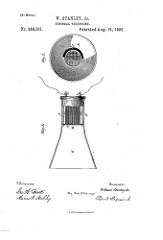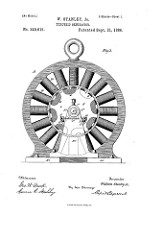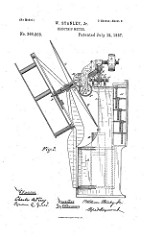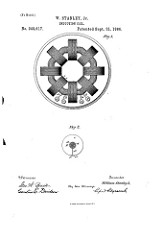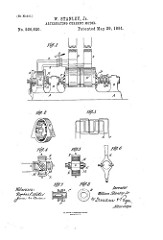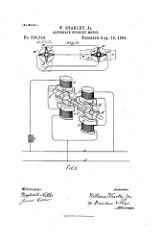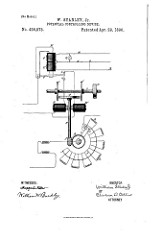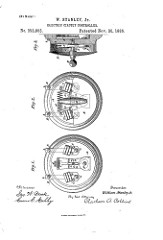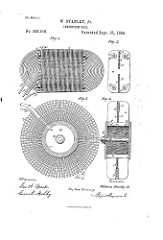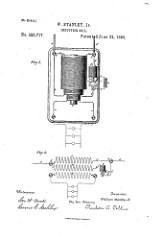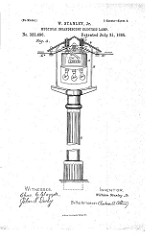While looking up some recent patents for my thesis, I stumbled upon what appears to be a new Google service, Google Patents. Now, the cliché about Google is that the first thing people do when they discover Google is they Google themselves. Well, I can’t really patent-Google myself, per se, but I can patent-Google my great grandfather William Stanley Jr. who generated over 100 patents, including the transformer and the Stanley Thermos, both of which are still in use today. In fact, all those white trashcans that litter telephone poles all over the world (and cause so many problems during heat waves) are more or less his fault. As with any invention, there are always more hands involved than those cited in the patent, but officially he does hold claim to the modern variant such as those found on telephone poles.
Now, for those of you thinking to yourselves that you can hit me up for money, neither I nor my family gain anything from this legacy other than the legacy — I’m a struggling artist after all, and haven’t even been paid yet for the last two gigs (you know who you are) — and in fact while we’re at it, I was actually going to ask you if you could spare a dime. Remember, these patents have long-since fallen into the public domain (my preferred distribution channel ;-). This is also the first time I’ve mentioned this in any public forum, mostly because I have been struggling with electricity for the past several years and have inherited none of those gifts that either William (or my father for that matter) possessed so naturally. So I’m a little embarassed to have such illustrious ancestors in a field for which I am so inept. In fact (oh, the shame of it all), I find digital circuits to be sooooo much easier to control than the type of electricity my great-grandfather used to manipulate, since in fact in a digital circuit you really aren’t concerned all that much with the actual properties of the electricity itself. It is mostly just a question of getting the right resistor in the right spot and then trying to program the controller to flip something on and off at the right moment, or of reading the state of some sensor that does most of the work for you. I.e. no physics required. But this paresse is also starting to show it’s limits, and I’ve been thinking about how best to provide myself with the means to move into more serious sensor work after the current job runs out.
It’s a real pleasure to finally have access to all these patents. I don’t have the time to scour them just this moment, but I had actually started the process of recovering his patents somewhat recently, only hadn’t found the time to uncover any more than the two or three well-known ones. I was planning on investigating the matter further in a few months. Now that Google, du jour au lendemain, has suddenly placed online over 70 accessible documents, it should make things a little easier.
And just look at these drawings. They’re exquisite:

